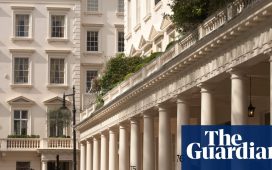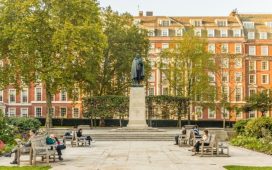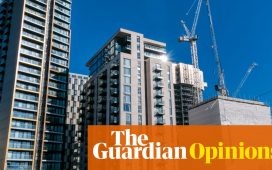Stay informed with free updates
Simply sign up to the UK property myFT Digest — delivered directly to your inbox.
The writer is a property developer
Canary Wharf in London’s Docklands first opened in 1991 with a clear vision of becoming a cluster for banks and trading houses that could no longer be accommodated in the City of London. Over the years, it successfully attracted major companies, resulting in the construction of millions of square feet of office space.
Later additions included a successful underground shopping centre and residential buildings. However, Canary Wharf lacks architectural flair, excellence and street-level vibrancy. In contrast, the City, which developed organically, is a melting pot of different professions, cultures and styles. The Square Mile is more diverse and capable of regenerating itself, making it more interesting and dynamic.
Canary Wharf faces significant challenges. Companies are deserting it to return to the City, which has become more attractive. Many major office occupiers at Canary Wharf who want to leave are hampered by financial ownership, long lease commitments, or the inability to find suitable buildings in the Square Mile.
A drastic transformation is needed. But current plans to turn high-rise towers into mixed-use buildings will not be enough to address the fundamental issue of decline. A plan for the reuse of the HSBC building is reported to cost £400mn to £800mn and does nothing to change the environment of the place. The area feels sterile and lacks the dynamism of other parts of London.
Canary Wharf needs to reinvent itself as a neighbourhood with all the ingredients of civic life, merging with the rest of the Isle of Dogs. It should have schools, playgrounds, medical facilities, entertainment and ground-floor retail to make its streets interesting and create a social community. It ought to be a place where more people want to live, work and spend their leisure time.
An example of successful change is New York’s Financial District, reinventing itself as a truly mixed-use area that continues to evolve organically.
The transformation of Canary Wharf should involve demolishing some towers to create more parks and part-demolishing others to allow more sunlight and open spaces. Existing infrastructure, such as the car park below Canada Square, could be repurposed.
Canary Wharf can learn from the remarkable decline and rebirth of other areas in London such as Shoreditch or the Southbank — both of which are now sustainable and attractive. Canary Wharf should aim to become the greenest area in the UK capital with the lowest levels of pollution. A landscaper with vision could redesign the street spaces and building facades to create a new environment. The roads could be converted into green oases by moving traffic underground, enhancing the area’s appeal.
The real challenge, though, lies in financing this transformation. Construction costs are rising, and prices for good-quality (but not prime) office space in central London are down around 30 per cent since the first quarter of 2022, according to research from Green Street. It estimates Canary Wharf net effective rents for properties other than super prime are down by 20 to 25 per cent over the same period. Overcoming such challenges requires highly skilled developers — and financiers willing to invest in apparently unprepossessing unlet spaces.
Across the estate, more than a fifth of offices are empty with the expectation of over 4mn square feet becoming vacant over the next five years. Canary Wharf Group only owns 13 of the 32 buildings so there needs to be one strategy for the whole estate, which is difficult to achieve.
Canary Wharf’s future hinges on its ability to evolve into a more varied, vibrant and sustainable urban area. It should balance the needs of businesses, residents and cultural life, with strong amenities available at affordable cost. While Canary Wharf still has significant potential as a major business and commercial hub, its future success depends on a bold and dramatic transformation. It must redefine itself and shift perceptions if it is to become a truly active participant in London’s contemporary urban landscape.
We need to save Canary Wharf — not least because billions have already been spent on infrastructure, making it very well connected with transport links. Then there are the substantial tax breaks given to the project over the years that need to demonstrate good investment. Canary Wharf’s major shareholders, the Qatar Investment Authority and Brookfield, have the financial wherewithal to support this transformation. But if they choose not to invest, it is unclear who will.











